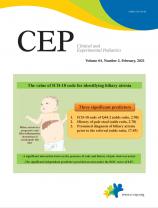The global coronavirus disease 2019 (COVID-19) crisis has brought unprecedented changes in childrenŌĆÖs routines due to social distancing and confinement. Current data indicate that children are less vulnerable to COVID-19 [1]. However, the indirect impacts of constrained health systems, limited access to preventative services like vaccinations, childcare disruptions, school closures, and household loss of income, are considerable. Thus, it is critically important to address collateral impacts on children when discussing strategies for mitigating COVID-19.
In many places, COVID-19 has forced the discontinuation of regular health services by overwhelming health system capacities [2]. Furthermore, infection control procedures designed to reduce severe acute respiratory syndrome coronavirus 2 (SARS-CoV-2) virus transmission have decreased access to other health services and halted the delivery of some essential childcare services. Specifically, the interruption of immunization services may increase child morbidity and mortality rates in the medium to long term. To date, routine childhood immunization services have been disrupted globally, with more than half of the 129 countries reporting disruptions to vaccination services during March and April 2020 [3]. These disruptions occurred not only in low- and middle-income countries; rather, even high-income countries like the United States experienced a decline in vaccination coverage following the declaration of national emergency in March 2020 [4]. In contrast, the vaccination coverage was relatively sustained in the Republic of Korea. Compared to corresponding months in 2019, minimal decreases in vaccination coverage rates were noted in January to March 2020: vaccines for infants aged <12 months (Bacille Calmette-Gu├®rin, hepatitis B, diphtheria-tetanus-acellular pertussis [DTaP], inactivated polio vaccines) sustained coverages at 97%ŌĆō98% in 2020; the first measles-mumps-rubella vaccine dose from 95.9% (2019) to 95.0% (2020), the fourth DTaP vaccine dose from 90% (2019) to 87% (2020), and the fourth Japanese encephalitis vaccine dose from 88% (2019) to 86% (2020) [5]. The smaller decline in vaccination coverage in Korean children suggests that system-level strategies to maintain well childcare and immunization are in place (Table 1). Sustained vaccination coverage in children reflects the success of previous strategies to promote the expansion of childhood vaccinations including outreach to private clinics and a school-based certificate system. With the long-standing history of the universal vaccination program supported by public funding in Korea, the system has evolved to incorporate evidence-based policy making through a national immunization technical advisory group. Vaccination registrations are mandated for reimbursement to the private sector; for the next vaccination schedule, a text message is routinely sent for reminder-recall purposes [6]. This community-based partnership between the public and privatized system has enabled this sustained level of vaccination coverage during the COVID-19 pandemic.
As of July 13, 2020, 109 countries had implemented country-wide school closures to mitigate the COVID-19 pandemic, affecting an estimated 60.5% of students globally [7]. School closures worsen the learning gap since children from poorer families fall further behind, while wealthier children may continue schooling using digital tools. Moreover, many children who rely on school meals are deprived. As one of the earliest hit countries with COVID-19, the Republic of Korea closed most schools until May 2020 and began the first stepwise reopening. The plan included precautionary measures of infection control and a preparedness plan (Table 2). Local class or school closures were allowed based on local infection rates in conjunction with in-school health and safety measures, while students continued distance learning at home. Between May 1 and July 12, 2020, a total of 127 school-aged pediatric COVID-19 cases were confirmed in Korea when schools opened for in-person (face-to-face) classes on May 20. Among them, only 2% (n=3) were exposed to SARS-CoV-2 in the public education system.8) This finding is in line with reports from Norway and Ireland that, in the setting of vigilant infection control and prevention planned in schools, COVID-19 transmission in schools can be limited [9,10]. These findings from Korea suggest that the reopening of schools following standardized measures applied to schools such as detailed guidance for school closure, disinfection, and contact management did not aggravate the course of COVID-19 resurgence in children.
Mobilizing sufficient financing remains a major challenge in implementing the 2030 Agenda for Sustainable Development and achieving the Sustainable Development Goals. Horizontal cooperationŌĆöthe exchange of knowledge, expertise, and technologyŌĆöremodels the development finance landscape. As a signatory to the UN General Assembly Resolution on Buenos Aires outcome document of the second High-level United Nations Conference on South-South Cooperation, the Korean government is keen to champion international development cooperation by sharing its experience, lessons learned, good practices, knowledge, and expertise with other countries through horizontal cooperation. While KoreaŌĆÖs traditional forms of international development cooperation (grants, loans, and trade) remain relevant and growing, new complementary approaches such as horizontal cooperation through United Nations Children's Fund (UNICEF)ŌĆÖs offices in over 190 countries and territories will help end its dependence on long-established financial mechanisms. We are now happy to include specific Korean examples and lessons learned in mitigating COVID-19 in KoreaŌĆÖs contributions.





 PDF Links
PDF Links PubReader
PubReader ePub Link
ePub Link PubMed
PubMed Download Citation
Download Citation


